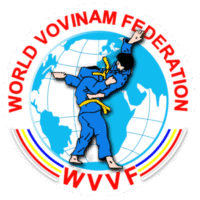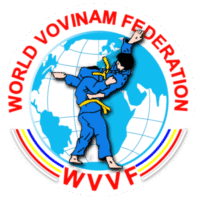Martial arts master Trần Huy Phong was born on December 28, 1938, in Quần Phương village, Hải Trung commune, Hải Hậu district, Nam Định province. His birth name was Trần Trọng Bách, later changed to Trần Quốc Huy. He was the fourth child in a family of seven siblings. His father was Trần Văn Bảng (1898–1975), and his mother was Trần Thị Nhàn (1913–1993). According to the family lineage, he was a 27th-generation descendant of the national hero Trần Quốc Tuấn, also known as Hưng Đạo Đại Vương.
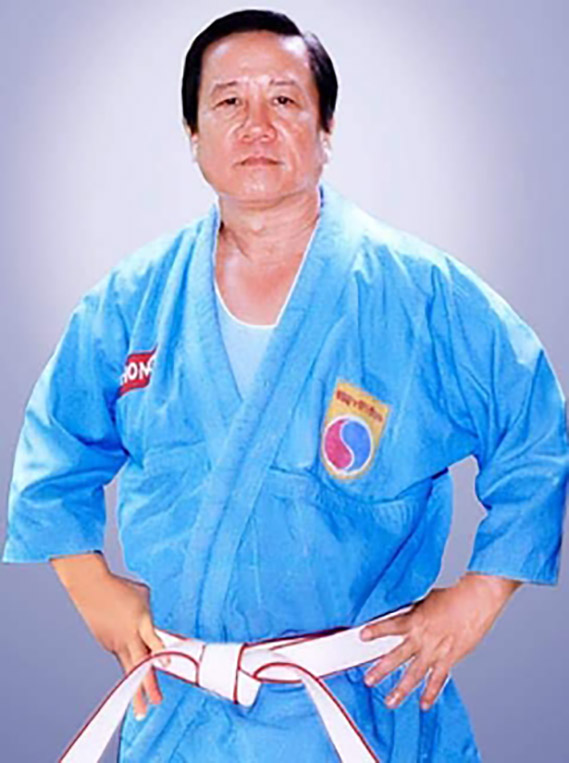
Master Trần Huy Phong
Born into a land known for producing exceptional people and raised in a family with a deep tradition of both scholarship and martial arts, Trần Huy Phong demonstrated remarkable intelligence and character from a young age. Though his early years unfolded under French colonial rule (1884–1945), he benefited from a solid family-based education. Each day, he was taught traditional medicine, acupuncture, and martial arts by his maternal grandfather, Trần Văn Khiêm (1879–1949), a renowned physician in the region.
This strong foundation helped him develop an indomitable will, leadership ability, and a generous, chivalrous spirit. At the age of 12, in 1950, amidst wartime turmoil, his family lost contact with his father, who was then working as a Guild Leader in Cẩm Phả. With his mother gravely ill from worry and the family in extreme poverty, young Phong decided to take his five-year-old brother, Trần Huy Quyền, and walk hundreds of kilometers in search of their father. After a month-long journey, they found him. Deeply moved, his father resigned and brought his children back home to care for his wife. This courageous act not only reflected his filial piety but also marked a key moment in the development of his character. His family environment and traditions played a decisive role in shaping him—and indeed, many of his siblings later became prominent Vovinam masters, such as Trần Ban Quế, Trần Thế Tùng, Trần Huy Quyền, Trần Thiện Cơ, and Trần Nguyên Đạo.
In 1954, following the Geneva Accords, his family migrated to the South. Not long afterward, he happened to meet Master Nguyễn Lộc and began studying Vovinam – Việt Võ Đạo at the Thủ Khoa Huân martial arts school. He was just 16 years old. From the outset, Master Nguyễn Lộc recognized his exceptional talent and strong martial foundation. Phong advanced rapidly and soon became one of Nguyễn Lộc’s most outstanding students.
After Master Nguyễn Lộc passed away in 1960, the Vovinam – Việt Võ Đạo discipline was banned by the Ngô Đình Diệm government following the failed military coup of November 1960. During the government’s crackdown on martial arts groups, many schools had to cease activities. While Master Lê Sáng relocated to Quang Đức to focus on economic development, Master Trần Huy Phong—then a math teacher at several high schools in Sài Gòn—quietly opened clandestine Vovinam classes.
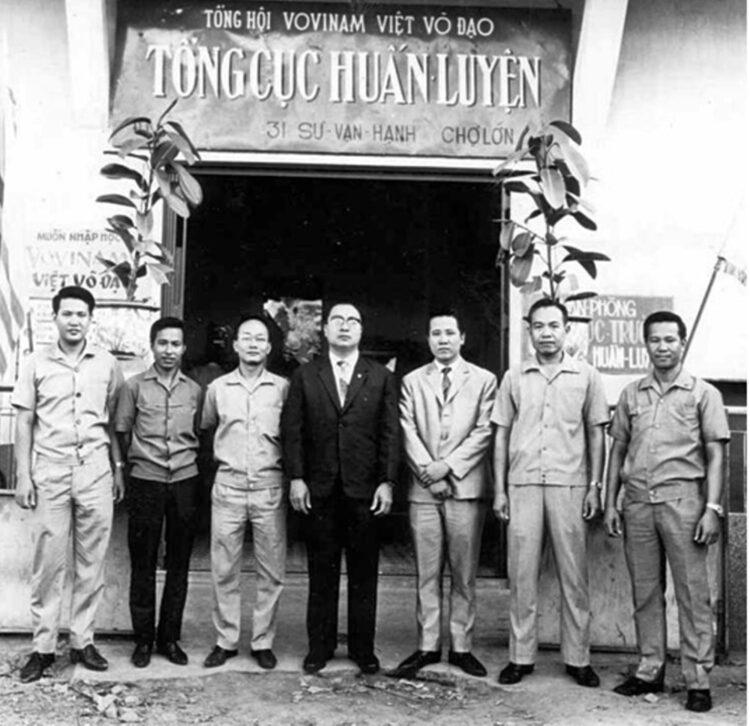
From left to right, martial arts masters: Ngo Huu Lien, Phan Quynh, Nguyen Van Thu, Le Sang, Tran Huy Phong, Nguyen Van Thong and Tran Ban Que – Photo of the sect’s documents.
His goal was to build a foundation for a movement called “Healthy Youth Practicing Vovinam,” emphasizing intellectual, moral, and physical development. Thanks to this direction, he established dozens of training centers in the schools where he taught. Although the discipline was officially banned, Vovinam – Việt Võ Đạo not only survived but flourished among students and intellectuals during this time.
In 1964, after four years of prohibition, Vovinam was reinstated. Master Trần Huy Phong became an assistant to Grandmaster Lê Sáng and was appointed Head of the Research Board. He contributed significantly to reorganizing the structure, techniques, and training programs of the discipline. Martial arts centers such as Hồ Vũ, Ánh Sáng, Thánh Thomas, Thăng Long, Trí Đức, and Trần Thanh Temple became prominent symbols of Vovinam’s resilience.
During this period, he also successfully introduced martial arts into the curriculum of high schools like Chu Văn An, Trưng Vương, Cao Thắng, Gia Long (now Nguyễn Thị Minh Khai), and Pétrus Ký (now Lê Hồng Phong). Together with fellow teacher Mạnh Hoàng, he helped secure performance licenses and enrollment approvals, leading to hundreds of classes and thousands of students embracing the art.
In 1966, they co-founded the Hòa Lư Training Center, with Master Trần Huy Phong as its director. It soon became a major training hub, producing generations of talented red-belt masters who would later spread Vovinam globally.
In 1967, he founded the “Việt Võ Đạo Youth Union,” a youth organization focusing on social service, education, and cultural activities. He was its first president and also played a central role in developing school martial arts programs before 1975.
In the early 1970s, Master Trần Huy Phong established the “Việt Võ Đạo Community Village” in Tân Tạo (Bình Chánh) on a 3-square-kilometer plot. There, he led the construction of drainage canals, developed agriculture, and founded a cooperative to support long-term martial arts training. After reunification, this area became part of the government’s Dương Minh Xuân economic development zone.
Also in 1970, he helped initiate a movement to construct a temple dedicated to the Hùng Kings. The headquarters for this effort was the Hòa Lư Training Center, which became the annual site for commemorative ceremonies involving government, organizations, and citizens.
In 1973, Grandmaster Lê Sáng announced a rotating leadership structure for the sect. Ten senior masters would take turns holding the position of General Director of Training, each serving a one-year term. Master Trần Huy Phong was appointed first in July 1974. He also served as Director of the International Office of Development, helping lay the foundation for Vovinam’s international expansion and mapping out a strategy for nationwide growth. He dispatched masters and coaches to provinces across Vietnam, including Phú Yên, Bình Dương, Quy Nhơn, Cần Thơ, Hậu Giang, Kiên Giang, An Giang, Vĩnh Long, and Mỹ Tho.

Master Tran Huy Phong’s first students – 1964
From left to right: Tran Van Be, Nguyen Van Hoan, Duong Hoanh San, Tran Van Trung, Master Tran Huy Phong, Phan Quynh, Nguyen Van Le, Tran Huy Quyen and Le Cong Danh.
Following national reunification in 1975, Vovinam was once again banned. But Master Trần Huy Phong, alongside Grandmaster Lê Sáng and other senior masters, continued to operate quietly to preserve the sect.
In 1986, he became the third Grandmaster of the Vovinam discipline. He held this position until 1990, when he stepped down to focus on martial arts research.
After martial arts were officially permitted again in 1992, he founded the Cây Tre Martial Arts Institute—one of Vietnam’s first private martial arts schools in the Đổi Mới era. He organized the first citywide (1992) and nationwide (1993) Vovinam championships after 1975.
His greatest cultural and educational aspiration was the establishment of Hùng Vương University, where Vovinam – Việt Võ Đạo would be taught as a core subject in holistic mind-body education. In 1974, he and prominent intellectuals such as Ngô Gia Hy, Nguyễn Huy, Hoàng Xuân Đỉnh, and Nguyễn Trí Văn secured a license to open the university—but the project was halted by the fall of the Republic of Vietnam in 1975.
He revived this dream in 1991, and on November 3, 1993, the Ministry of Education and Training approved the establishment of Hùng Vương Private University. The school’s initial campus was Master Trần Huy Phong’s own residence at 97 Hoàng Văn Thụ Street, Hồ Chí Minh City. Although the martial arts department was never fully launched due to his declining health, the university continues to operate, upholding the ideals of “Loyalty – Confidence – Responsibility.”
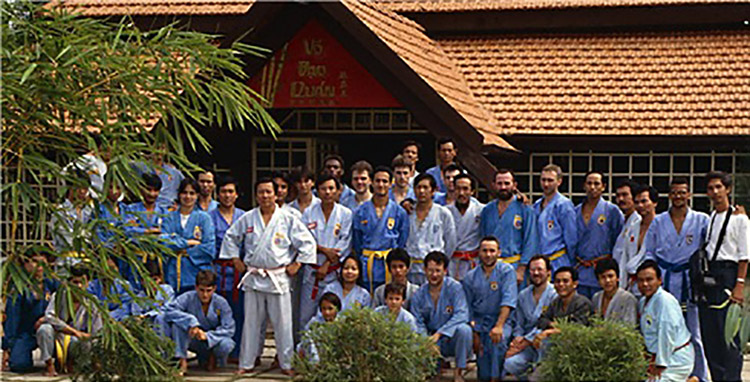
Bamboo Tree Martial Arts Institute 1993
Master Tran Huy Phong and the delegation of the French Vovinam-Viet Vo Dao Federation
In 1994, his health deteriorated. He traveled to France for treatment, accompanied by his younger brother Trần Nguyên Đạo. Despite intense suffering, he completed his philosophical work Cách Mạng Tâm Thân (“The Mind-Body Revolution”), which remains a valuable legacy for the discipline and future generations.
Realizing his time was limited, on March 19, 1995, from Gustave Roussy Hospital in France, he wrote an emotional letter to all Vovinam practitioners worldwide, calling for unity and reconciliation. His appeal deeply moved the community and received hundreds of heartfelt responses from five continents.
He returned to Vietnam in July 1997 to reunite with his family and students and passed away on December 13, 1997, at the age of 59.
His passing was a great loss for the Vovinam – Việt Võ Đạo community both in Vietnam and abroad. But his legacy lives on through his students, writings, institutions, and the countless contributions he made to the development of Vietnamese martial arts and culture. Through a lifetime of devotion, Master Trần Huy Phong rightfully deserves recognition as one of the most remarkable Vietnamese figures of the 20th century.
— Vovinam Digital
(Compiled from sect records and media archives)
